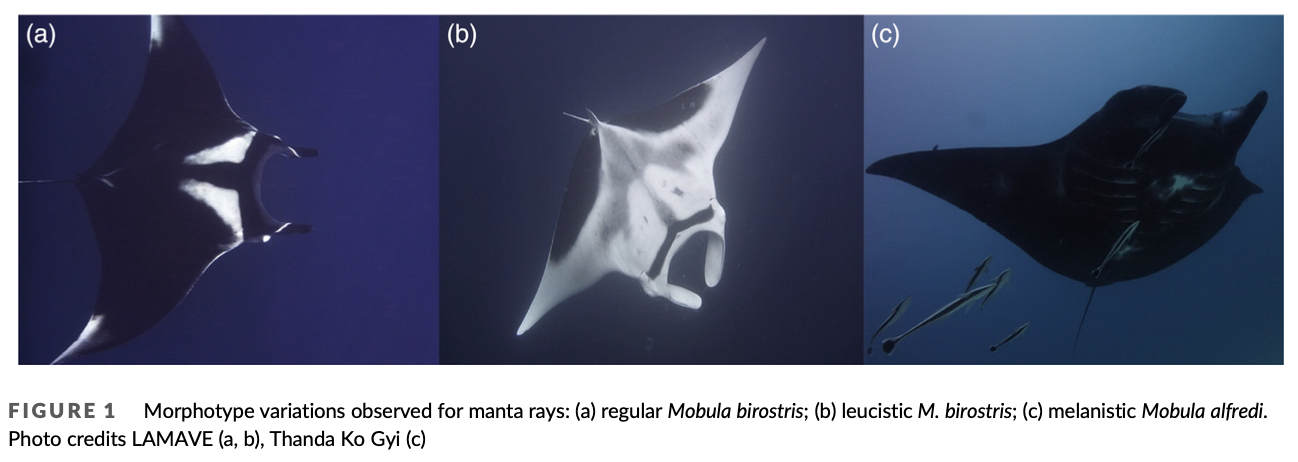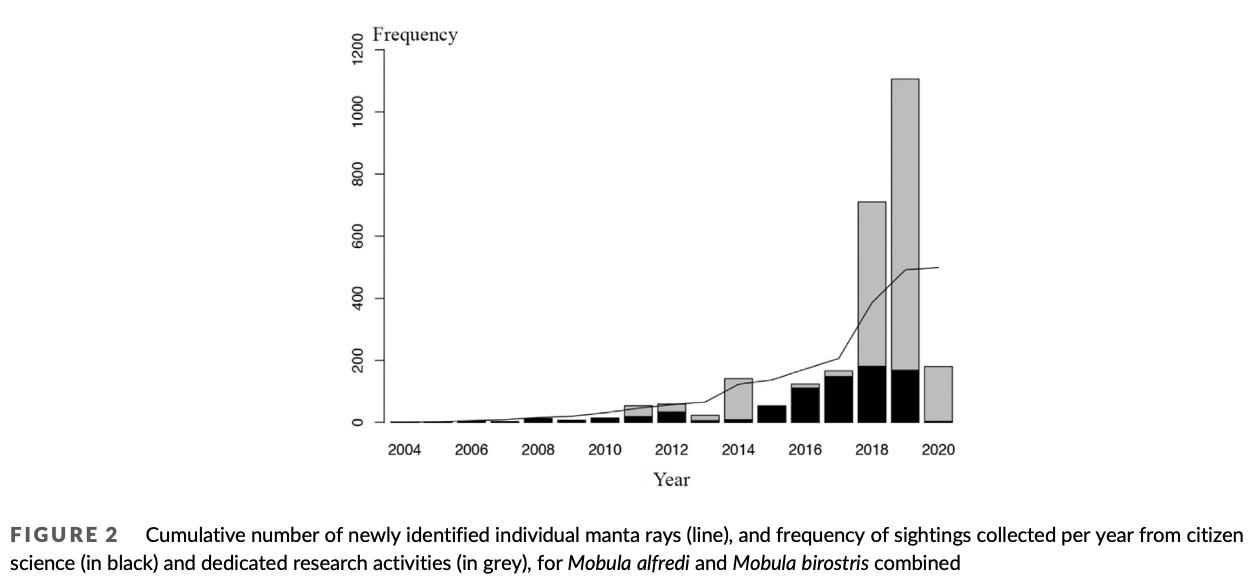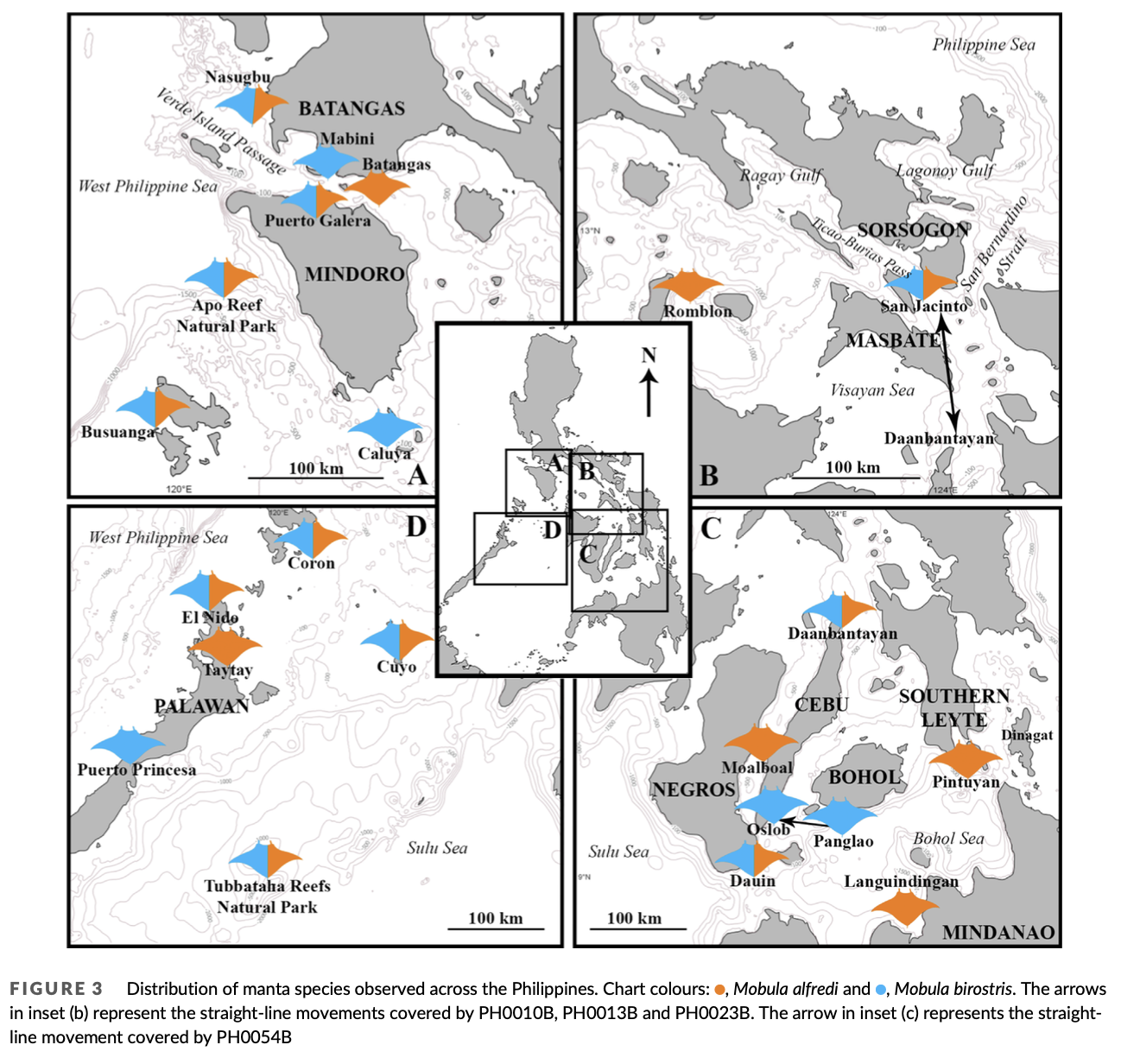Distribution of the reef manta ray Mobula alfredi and the oceanic manta ray Mobula birostris in the Philippines: a collaborative effort for conservation
December 2022
Joshua Rambahiniarison, Ariana Agustines, Konstantinos Alexopoulos, Gonzalo Araujo, Asia O. Armstrong, Shannon Arnold, Aldrin Barruga, Titus Cañete, Segundo Conales, Kymry Delijero, Nonie P. Enolva, Anna L. Flam, Eliya Keane, Jessica Labaja, Christine G. Legaspi, Calum Murie, Ryan Murray, Simon P. Oliver, Simon J. Pierce, Alessandro Ponzo, Christoph A. Rohner, Rosanna Schifferer, Sally Snow, Martina Spakowski, Guy M. W. Stevens, Timur Tilgel, Jessica N. C. Wong, Arnel Andrew Yaptinchay & Yotam Barr
Keywords: Conservation Management • Habitat Use • Migratory Corridors • Photo-Identification • Species Distribution



Summary: A study in the Philippines created a national database of manta ray sightings by collaborating with various organisations. In-water photographs and videos were collected through citizen science and research, revealing 22 sites where manta rays were present. This study identified 392 reef manta rays and 107 oceanic manta rays. Key aggregation areas were found in Masbate and Palawan, with three oceanic manta rays recorded migrating 150 km between Cebu and Masbate. Despite increased recreational diving, an 80% decline in oceanic manta ray sightings was observed. To conserve manta rays effectively, the study recommends identifying and protecting their hotspots, establishing sustainable tourism practices, and implementing measures to reduce fisheries interactions.
Abstract
“Little is known about manta ray population size, structure and connectivity in the Philippines. In collaboration with dive operators, non-governmental organizations and authorities, sightings of manta rays were collated into a single national database. Using in-water photographs and videos gathered through citizen science and dedicated research efforts, this study compiled sightings between 2004 and 2020, showing 22 separate sites throughout the archipelago with manta rays present. A total of 392 individual reef manta rays (Mobula alfredi) and 107 oceanic manta rays (Mobula birostris) were identified from the collected footage. Four specific sites in the provinces of Masbate and Palawan together hosted 89% of all identified individuals and accounted for 95% of sightings, highlighting these areas are key aggregation sites. This study also reports the movements of M. birostris within the Philippines, based on photo-identification of three individuals moving 150 km between Cebu and Masbate. Despite the growing number of recreational divers in Daanbantayan and San Jacinto, an 80% decline in M. birostris sightings was observed at these sites. To ensure effective future conservation, it is recommended that efforts focus on the identification and protection of manta ray hotspots and migratory corridors, the creation of a sustainable tourism framework and, most important, the implementation of mitigation strategies to reduce fisheries interactions.”
Infographics
Author Affiliations
Large Marine Vertebrates Research Institute Philippines
Coastal Oceans Research and Development Kenya
School of Biological and Marine Sciences, University of Plymouth
Marine Research and Conservation Foundation
Project Manta, School of Biomedical Sciences, The University of Queensland
The Manta Trust
Ticao-Burias Pass Protected Seascape, Department of Environment and Natural Resources V, Provincial Environment and Natural Resources Office
Tubbataha Management Office
World Wildlife Fund Philippines
Bureau of Fisheries and Aquatic Resources Philippines
Marine Megafauna Foundation
The Department of Biological Sciences, University of Chester
The Underwater Africa Foundation
Dive Sibaltan
Marine Wildlife Watch of the Philippines
School of Zoology, Tel Aviv University
Funded by
Prince Bernard Foundation
Shark Conservation Fund
The Rufford Foundation
Fondation Ensemble
PADI Foundation
Australian Research Council
Aqua-Firma
Waterlust
Save Our Seas Foundation
Grieg Foundation
WWF Singapore

